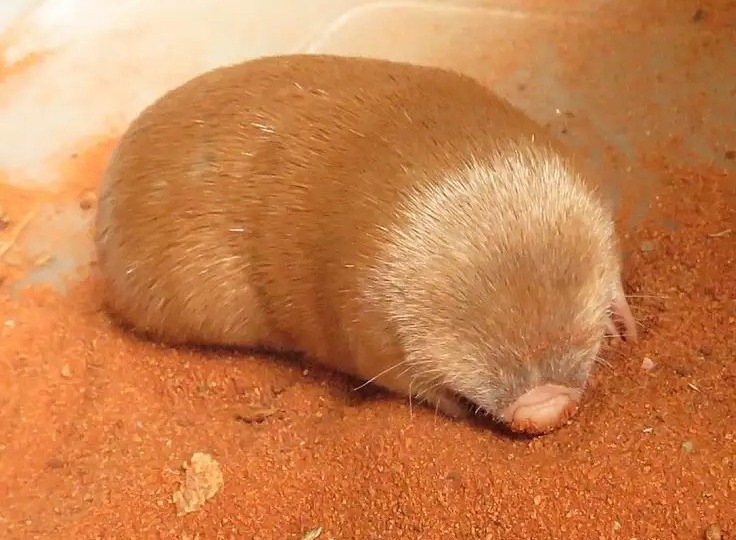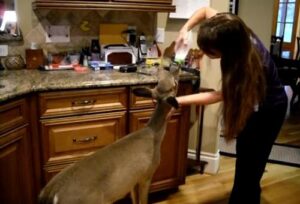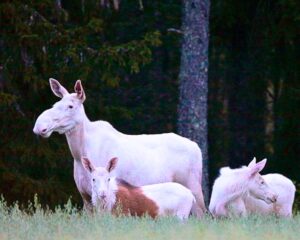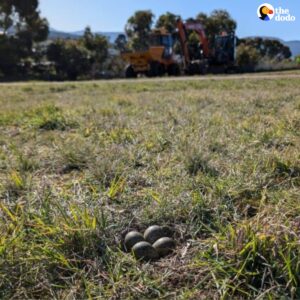The golden mole many thought was gone has been found again in South Africa. After more than 80 years without a confirmed sighting, researchers finally filmed and photographed the small, blind mammal in coastal sand dunes. This clear win for wildlife shows how patient science, smart tools, and love for nature can save animals that live in hidden habitats.
What makes De Winton’s golden mole special?
De Winton’s golden mole (Cryptochloris wintoni) is tiny, quick, and hard to see. It is blind and “swims” through sand using powerful front legs. Its fur looks shiny and almost rainbow-like in sunlight. For decades, it had only been recorded in one place—Port Nolloth, a small town on South Africa’s northwest coast. The last confirmed record was in the 1930s. Many feared it had disappeared forever.
Yet the mole did not vanish. It simply lived the way it always had—out of sight, beneath the surface, moving through soft sand where people rarely look.
How do you find an animal that hides underground?
The search team used both old and new methods:
-
Reading the ground. After heavy rains, fresh tracks and burrows appeared on the dunes. The team learned to spot these signs and followed them.
-
Listening with a trained nose. A detection dog sniffed for two common golden mole species—Cape golden mole and Grant’s golden mole. The dog did not react to the tracks near Port Nolloth, a hint that another species might be present.
-
Testing the sand for DNA. The team collected over 100 soil samples from different spots. Every animal leaves tiny traces—skin cells, hair, waste. Scientists call this environmental DNA (eDNA). By pulling DNA from sand, they could test which species had passed by, even if no one saw it.
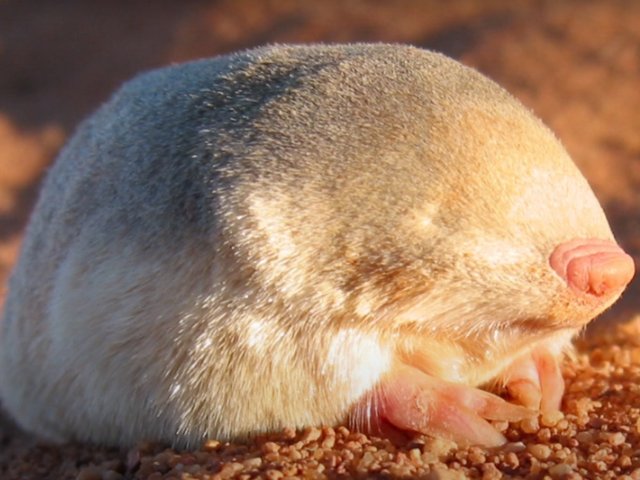
This mix of field clues and lab work built a strong case. It also kept stress low for the moles, since the work focused on signs, not captures.
(Mid-article placement as requested.)
The proof: museum DNA meets modern science
Finding eDNA that looked “close” to De Winton’s golden mole was exciting, but not enough. The team needed a perfect match. In 2022, a museum in Cape Town shared a DNA sample from a preserved De Winton’s specimen. Scientists compared that old gene sequence to the eDNA they had pulled from the sand. The result was clear: the fourth, unknown DNA profile in their samples matched De Winton’s golden mole.
With that, the “lost” species was officially found again. Even better, researchers later identified four more populations in the region. That means the species is not only alive—it’s living in several places, which is much safer for long-term survival.
Why did it seem extinct for so long?
Three simple reasons:
-
Secret life. Golden moles live in habitats that are hard to search—loose dunes and hidden burrows. They travel under the surface and rarely come out.
-
Small size, big camouflage. Even when they emerge, they are quick and blend into the colors of sand and dry plants.
-
Limited historical records. Many old records were just notes and skins. Without photos, videos, or modern DNA, it was easy to miss or mislabel sightings.
The lesson: absence of evidence is not evidence of absence—especially for underground animals.
What does this rediscovery mean for wildlife?
-
Hope for the “lost.” De Winton’s golden mole is part of the Search for Lost Species project launched in 2017 by conservation groups. The goal is to find 25 plants, animals, and fungi “lost to science” for at least 10 years but not listed as extinct. So far, researchers have confirmed 11 rediscoveries, including Attenborough’s long-beaked echidna, Wallace’s giant bee, and the velvet pitcher plant.
-
A win for modern tools. eDNA is a game-changer. It helps scientists detect species without trapping them. This protects shy wildlife and speeds up surveys across large areas.
-
Better maps and plans. Finding multiple populations means experts can now outline key habitats, set up monitoring, and guide local development so the dunes stay healthy.
Simple science: what is eDNA?
Think of eDNA as “crumbs” of life left behind. When a creature moves, tiny pieces of it fall into the environment—bits of skin, hairs, or droppings. In water, soil, or even air, scientists can filter those crumbs, extract DNA, and test which species they belong to. If the DNA barcode matches a known species, you have proof it was there. For the golden mole, eDNA in sand made the invisible visible.
Why Port Nolloth matters
Coastal dunes near Port Nolloth are more than pretty landscapes. They are living habitats that shelter insects, small reptiles, rodents, and hidden mammals like golden moles. The dunes shift with wind and rain. Their plants hold the sand together. When dunes are damaged by building, off-road traffic, or mining, the underground spaces collapse, and the food web breaks. Protecting this nature zone helps not only the golden mole but the entire wildlife community that depends on it.
How local people and visitors can help
You don’t need a lab to support this comeback. Small choices protect sensitive habitats:
-
Stay on marked tracks. Off-road driving can crush burrows and plant roots.
-
Keep pets leashed. Dogs and cats can harm hidden animals or scare them from safe areas.
-
Reduce noise near dunes. Quiet spaces help shy species feed and breed.
-
Support community groups. Local conservation teams know where help is needed most—volunteer days, beach cleanups, or habitat monitoring.
-
Respect research zones. If you see tape or signs, give the area extra space so surveys can continue safely.
A model for other “missing” species
The golden mole story highlights a practical, repeatable approach:
-
Use local knowledge to pick the right sites and seasons.
-
Read the landscape for wildlife signs after rain or wind.
-
Add eDNA sampling to cover more ground with less disturbance.
-
Compare findings with museum collections to confirm the match.
-
Share results with landowners and local leaders to protect key dunes and corridors.
This approach can guide searches for other “lost” species that live underground, in tree canopies, or in remote wetlands.
What happens next?
Scientists will likely:
-
Map the range. Where do the confirmed populations connect?
-
Watch trends. Are numbers stable, rising, or falling?
-
Guard the habitat. Work with local planners so roads, lighting, and tourism don’t cut through vital dune areas.
-
Educate the public. Clear signs and simple tips help people enjoy the coast without harming hidden wildlife.
These steps may seem small, but they add up to real safety for the golden mole.
Quick facts (easy to remember)
-
Species: De Winton’s golden mole (Cryptochloris wintoni).
-
Senses: Blind; relies on touch and vibration.
-
Movement: “Swims” through sand under the surface.
-
Look: Shimmering, iridescent coat that sheds sand.
-
Home: Coastal dunes near Port Nolloth; more populations now confirmed.
-
Why important: Part of a balanced dune habitat; indicator of healthy nature.
Why this story matters
When a species returns from the edge of “lost,” it proves that careful science and patient fieldwork can change what we believe. It also reminds us that many animals survive in silence, out of sight, and need room to live. The golden mole’s comeback is more than a headline—it is a plan for action. Protect the dunes. Support the research. Keep hope alive for the next rediscovery.
Full Story: https://aquariumbee.com/tammy-hembrows-bikini-photos-are-stirring-controversy-heres-why-everyones-talking/
